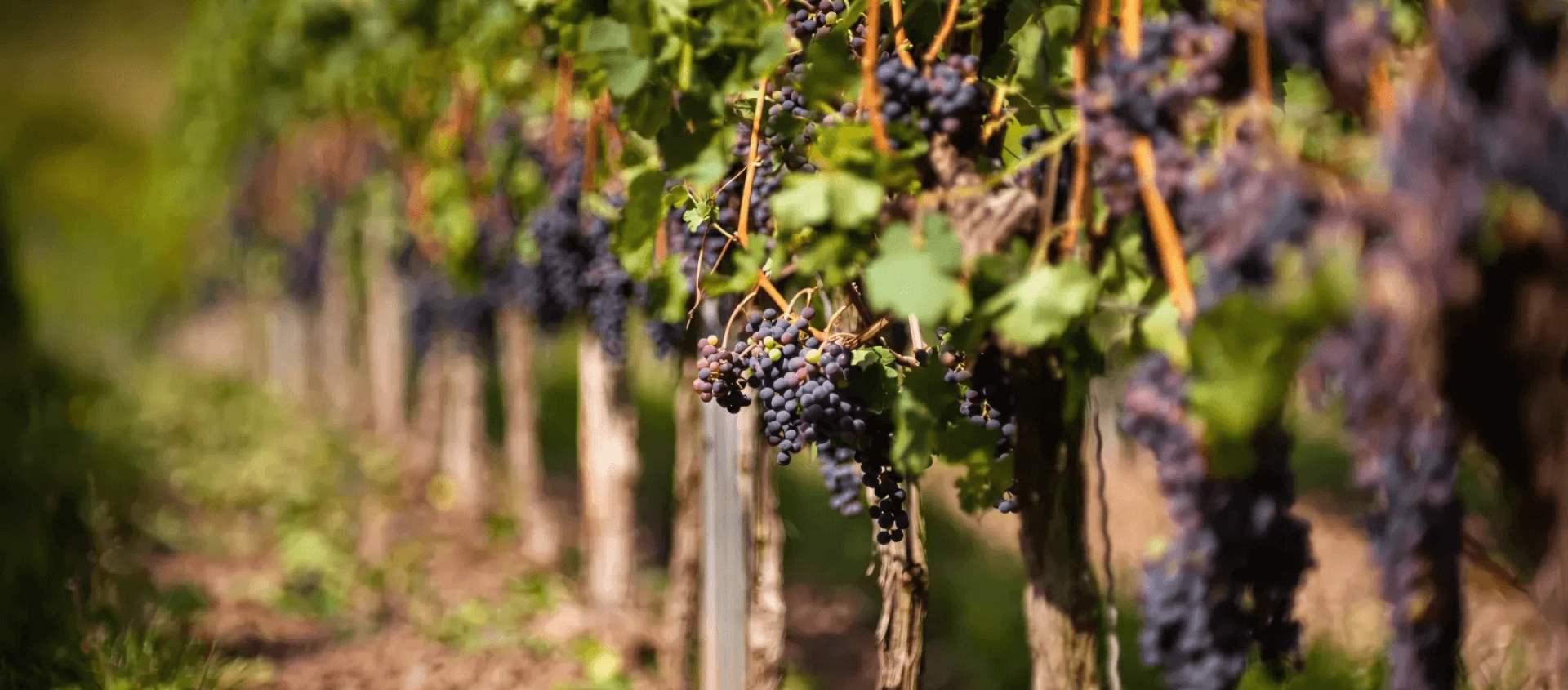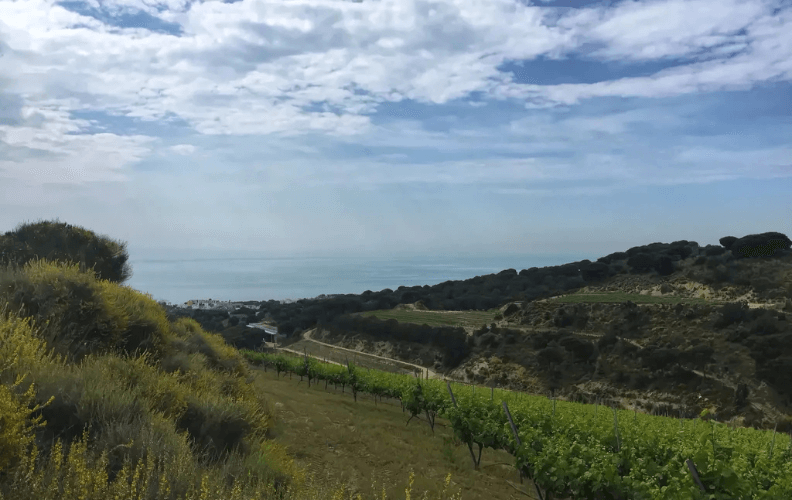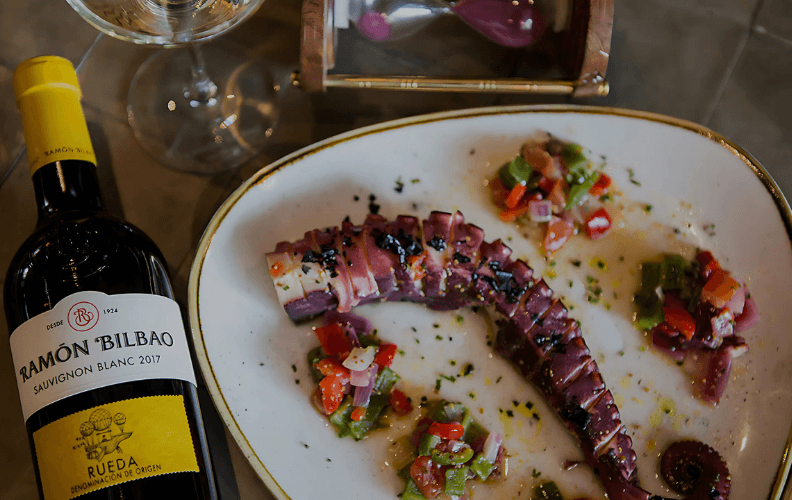
Insights
Catalonia’s Wine Regions with Lucas Payà: Tradition, Innovation & Global Influence
A Masterclass with Lucas Payà on the Future of Catalan Wines on How Catalonia’s Unique Terroir and Winemaking Expertise Are Shaping the Future of Wine
The USA Trade Tasting (USATT) on May 20th at Morgan Manufacturing, Chicago, is an essential event for wine professionals looking to discover top-tier international wines. This year’s lineup includes exclusive masterclasses, tastings, and industry insights from world-class experts.
One of the key sessions will explore Catalonia’s 12 PDO wine regions, showcasing their unique terroirs, indigenous grape varieties, and evolving winemaking techniques. Attendees will gain firsthand knowledge of why Catalonia is one of the most exciting wine regions in Europe today.
In addition, Lucas Payà, Global Brand Educator for House of Lustau, will provide a deep dive into Catalonia’s wines, sharing insights from his extensive experience in the world of fine wine.

Don't miss this opportunity to taste exceptional wines and connect with industry leaders. Register now for USA Trade Tasting and secure your spot at this exclusive event!
Lucas Payà is one of the wine industry’s most respected voices, having worked with elBulli, José Andrés’ ThinkFoodGroup, and now as Global Brand Educator for House of Lustau. In this exclusive Q&A, he shares his insights on Catalonia’s 12 PDO regions, how the region’s diverse terroir influences its wines, and what makes Catalonia an exciting destination for wine lovers and professionals alike.
What makes Catalonia’s 12 PDO wine regions distinct, and how does the region’s diverse terroir shape its wines?
Lucas: Catalonia’s 12 PDO regions offer an incredible diversity of terroirs, spanning from the Mediterranean coast to the foothills of the Pyrenees. This varied landscape results in a wide spectrum of wines, from the fresh and elegant whites of DO Alella to the intense, mineral-driven reds of DOQ Priorat.
A key development shaping Catalan wines today is the next generation of winemakers, who are blending tradition with innovation to preserve and elevate their land. Many estates are actively replanting vineyards with indigenous varieties, ensuring the region’s wine identity remains strong. Meanwhile, new vineyard management techniques are enhancing sustainability and resilience, leading to exceptional quality despite challenging climatic conditions.

Alella, bottles of wine.
How do Mediterranean influences and the Pyrenees impact the flavor profiles of Catalan wines?
Lucas: The Mediterranean climate provides warmth and a moderating coastal influence, allowing grapes to ripen fully while retaining freshness. The Pre-Pyrenees’ higher-altitude vineyards bring cooler temperatures and contribute elegance, structure, and vibrant acidity to the wines.
These dynamic influences have led to remarkable vintages in recent years:
- 2021: An extraordinary year for Garnatxa, producing refined, expressive reds.
- 2022: Warm conditions resulted in beautifully concentrated reds and outstanding white wines.
- 2023: A year of exceptional balance, where old vines and expert viticulture created some of the finest wines in recent memory.
Catalonia’s winemakers are proving that, through careful vineyard management and a focus on quality, they can consistently craft wines of extraordinary character and elegance.
What are some standout grape varieties unique to Catalonia’s wine regions?
Lucas: Catalonia has a rich heritage of indigenous grape varieties, many of which are experiencing an exciting revival thanks to replanting efforts by forward-thinking producers. Some key grapes include:
• White Varieties:
• Xarel·lo – The backbone of both high-end still wines and Cava, known for its structure and aging potential. • Garnatxa Blanca – A signature variety of Terra Alta, producing textured, mineral-driven whites.
• Moneu & Fourcada – Almost extinct but now making a comeback, showing incredible promise.
• Red Varieties:
• Trepat – The soul of Catalan rosé, bringing fresh, floral notes to both still and sparkling wines.
• Sumoll – Once nearly forgotten, this variety is returning as a key player in elegant, high-acid reds.
• Samsó (Carignan) – A key component in Priorat and Montsant, adding structure and complexity.
This renewed commitment to indigenous varieties is reinforcing Catalonia’s reputation as a world-class wine region with a distinct identity.

Catalonie Vineyard
How have Catalan winemakers balanced tradition with innovation to create distinctive wines?
Lucas: Catalan winemakers embrace a dual approach: honoring tradition while pushing boundaries to create wines that are expressive, sustainable, and high-quality. This balance is evident in:
• The resurgence of Brisat (skin-contact whites) and Vi Ranci (oxidized wines), championed by top wineries like Mas Candí and Parés Baltà.
• Biodynamic and organic viticulture, ensuring a deep connection to the land.
• A new wave of passionate young winemakers, such as Roc Gramona (L’Enclos de Peralba) and Carlota Pena Casacuberta (Olivardots), who are taking Catalan wines to new heights.
This spirit of innovation is what makes Catalonia one of the most dynamic and exciting wine regions in Europe today.
What should wine professionals know about pairing Catalan wines with food to highlight their complexity?
Lucas: Catalonia is not just a world-class wine region but also a global culinary hub, home to some of the finest restaurants and most revered gastronomic traditions. From Michelin-starred institutions to family-run establishments serving century-old recipes, Catalan cuisine is deeply intertwined with its wines.
Catalan wines are designed to be enjoyed with exceptional food, offering balance, freshness, and depth. Some perfect pairings include:

- Cava (traditional or aged styles) – Pairs beautifully with seafood, ibérico ham, and Catalan tapas.
- Xarel·lo-based whites – Ideal for grilled fish, creamy rice dishes, and Mediterranean salads.
- Trepat or Sumoll-based reds – Great with charcuterie, roasted vegetables, and poultry.
- Priorat reds (Garnatxa & Samsó blends) – A perfect match for braised meats, aged cheeses, and hearty stews.
- Sweet and fortified wines (DO Empordà & DO Tarragona) – Pair beautifully with Catalan desserts like crema catalana, turrón, or blue cheeses.
From rustic taverns to the most refined dining experiences, Catalan wines are at the heart of the region’s food culture, elevating every dish they accompany.
How can importers and distributors effectively introduce Catalan wines to new markets?
Lucas: To successfully promote Catalan wines, importers should focus on:
- Showcasing premium Cava and Corpinnat as top-tier sparkling wine alternatives.
- Highlighting Catalonia’s indigenous varieties as an exciting point of difference.
- Positioning Empordà and Terra Alta (among others) as emerging regions for high-value wines.
- Focusing on the prestige of top producers, as consumers often follow well-known names.
- Leveraging the global reputation of long-established PDOs like Priorat and Penedès, which have already built strong credibility among wine professionals and enthusiasts worldwide.
With rising interest in artisanal and terroir-driven wines, Catalonia is perfectly positioned to attract new wine lovers worldwide.
What role does sustainability play in Catalonia’s modern winemaking practices?
Lucas: Sustainability is at the heart of Catalan viticulture, with leading wineries embracing:
- Organic and biodynamic farming as a growing standard.
- Replanting native, drought-resistant varieties to maintain long-term vineyard health.
- Eco-friendly vineyard techniques to preserve soil vitality and biodiversity.
This forward-thinking approach ensures that Catalonia remains a leader in responsible, high-quality winemaking.
Are there particular Catalan wine styles or PDO regions that are gaining attention in the global market?
Lucas: Yes! Some of the most exciting trends include:
- Premium Cava & Corpinnat – Positioned as a world-class alternative to Champagne
- Still Xarel·lo wines – Becoming recognized for their minerality and ability to age beautifully.
- Terra Alta & Empordà – Emerging as sources of exceptional-value Garnatxa wines.
- Brisat wines – Catalonia is establishing itself as a leader in skin-contact white wines. The Catalan wine scene is evolving rapidly, and the world is starting to take notice.
How do Catalonia’s wines compare to those from other major European wine regions?
Lucas: Catalan wines stand out due to their combination of Mediterranean richness and high-altitude freshness, offering a unique balance of power, elegance, and terroir-driven character. Some key comparisons include:
• Priorat reds rival top Rhône wines in power and complexity, yet retain a distinctive mineral profile thanks to the region’s signature llicorella (slate) soils.
• Cava and Corpinnat match the elegance of Champagne while offering exceptional value and a unique Mediterranean expression.
• Xarel·lo-based still whites provide a fresh alternative to Chardonnay or Sancerre, with remarkable structure and aging potential.
• Catalan rosé wines (Trepat & Garnatxa-based) stand out as a fine alternative to Provence rosés, offering greater aromatic complexity, depth, and versatility in food pairings.
• Sweet and fortified wines from DO Empordà and DO Tarragona provide a unique experience comparable to the great fortified wines of Jerez or the Rhône’s Vin Doux Naturel but with their own distinct Mediterranean character.
This diverse range of world-class wines demonstrates Catalonia’s ability to compete with the finest wine regions across Europe, offering both prestigious and undiscovered gems for wine lovers to explore.

What advice would you give to sommeliers looking to expand their wine lists with Catalan selections?
Lucas: Sommeliers should approach Catalan wines as an essential part of any serious wine program, given their remarkable diversity, versatility, and deep-rooted connection to gastronomy.
- Feature high-quality Cava & Corpinnat as a premium sparkling wine option alongside Champagne.
- Introduce Penedès Xarel·lo whites as a sophisticated alternative to classic European white wines.
- Showcase Priorat and Montsant reds for guests seeking bold yet refined wines.
- Explore Terra Alta and Empordà for top-quality wines at great value.
- Tapping into the rise of high-altitude wineries in the Pre-Pyrenees, which are crafting precise, cooler-climate wines from grape varieties traditionally grown further north.
- Emphasizing the connection between Catalan wines and world-class gastronomy, making them an essential addition to any fine dining wine list.
With such an exciting range of terroirs, altitudes, and styles, Catalonia offers exceptional wines for every type of wine program.
As Lucas Payà emphasizes, Catalonia’s diverse terroir, indigenous varieties, and forward-thinking winemakers make it a world-class wine region. Whether you’re a sommelier, importer, distributor, or enthusiast, Catalonia offers wines that are unique, expressive, and ready to compete on the global stage.
Join Us at the USA Trade Tasting on May 20th. Experience Catalonia’s 12 PDO wine regions firsthand! This is your chance to meet top producers, attend masterclasses, and taste exceptional wines that are shaping the future of the industry.
Also Read:
Catalonia’s Wine Future: A Strategic Push into the U.S. Market
Who will you meet at USA Trade Tasting Chicago?
Taste some of the finest spirits in the world at USA Trade Tasting Chicago
Become a USATT exhibitor and grow your distribution in the USA. Meet importers, distributors, retailers and press. Get exhibitor information here.


